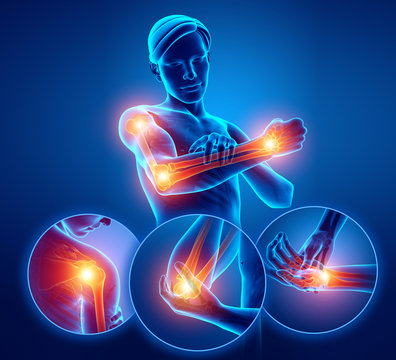
Joint pain is a common problem experienced by many people across different age groups, but its causes can vary significantly. Whether it’s waking up one morning with stiffness in your hands or feeling discomfort while walking due to knee pain, joint pain can have several underlying causes. This issue is often associated with aging, where bone health and other joint-related problems become more prevalent. However, it’s essential to understand that joint pain can affect anyone, regardless of age. Joint pain causes are multifaceted, and many young people also experience this discomfort due to underlying conditions. It’s important to pay attention to the symptoms and seek timely treatment to prevent worsening issues.
In today’s world, joint pain has become increasingly common due to several factors, including lifestyle changes, lack of exercise, poor posture, and underlying health conditions. Whether it’s finger joint pain causes, sudden joint pain causes, or shoulder joint pain causes, no matter what the causes are but these pains are experienced by people of all ages. Understanding these causes can help identify the root of the problem and take proactive measures to address them. Further, in this blog let’s explore the many common causes of joint pain and its treatment options.
Common Joint Pain Causes
Joint pain can arise from several causes, ranging from natural wear and tear to specific medical conditions. The most common joint pain causes include osteoarthritis, rheumatoid arthritis, tendonitis, and gout. Osteoarthritis is a degenerative joint condition that develops when the cartilage in the joints wears down gradually, resulting in pain and stiffness. This is one of the most prevalent joint pain causes in older adults, but it can also affect younger individuals, because of activities that strain the joints and genetic factors. As genetic influence can make some individuals more prone to this condition even without significant physical trauma or overuse.
Rheumatoid arthritis is another major contributor to joint pain. Unlike osteoarthritis, rheumatoid arthritis is an autoimmune disorder where the immune system mistakenly attacks the joints, leading to inflammation and pain. This condition also genetic often affects multiple joints simultaneously and can cause long-term damage if left untreated. Finger joint pain causes are frequently associated with rheumatoid arthritis, and symptoms can appear at any age, though it’s more common in women.
Tendonitis is another common cause of joint pain. It occurs when the tendons, which connect muscles to bones, become inflamed due to overuse or repetitive motion. Sudden joint pain causes can often be attributed to tendonitis, particularly in the shoulder, elbow, or knee. It’s often seen in athletes. Tendonitis can lead to swelling, tenderness, and difficulty moving the affected joint. Well, athletes can’t deny their work thus they can take several iv drips that are especially for athletes.
Gout is another painful condition that causes joint discomfort. It occurs when uric acid builds up in the body and forms crystals in the joints, leading to sudden and intense pain, often in the big toe or knee. This condition is more common in men and can result from poor diet, alcohol consumption, kidney issues or genetics again. Another cause of joint pain that’s gaining attention in modern times is the effect of sedentary lifestyles. Prolonged periods of sitting, lack of physical activity, and poor posture can strain joints, leading to stiffness, discomfort, and pain. Hormonal changes can also contribute to joint pain causes, such as thyroid disorders or menopause.
Joint Pain Treatment: Addressing the Joint Pain Causes
Addressing joint pain caused by internal factors requires a multifaceted approach. Medications, physical therapy, and lifestyle modifications can help reduce inflammation and improve joint function. For autoimmune-related joint pain, disease-modifying drugs or biologics can help manage symptoms and slow disease progression.
In cases where hormonal imbalances or genetic factors are contributing to joint pain, targeted treatments like hormone replacement therapy (HRT) or specific medications for thyroid disorders may be recommended. For genetic conditions like osteoarthritis or osteoporosis, early interventions such as dietary changes, exercise, iv drips and supplements can help slow down the degeneration of cartilage and bone.
Advanced tests, such as bone density scans and blood tests, genetic testing can identify the internal causes of joint pain. The anti-aging centre offers a comprehensive longevity program, which includes tests like genetic screenings, blood panels test, and bone health assessments to help determine the root causes of your joint pain. Based on these results, tailored treatment plans can be created to address the specific issues contributing to your discomfort.
Conclusion
Joint pain is not always caused by external factors like injuries or overuse—many joint pain causes are internal, stemming from genetic factors, autoimmune diseases, hormonal imbalances, and inflammatory processes. Understanding these underlying causes can help you seek the right treatment and prevent further joint damage. Whether you’re dealing with finger joint pain causes, sudden joint pain causes, or shoulder joint pain causes, early detection and personalized care are key to managing symptoms effectively. Consider getting tested at the anti-aging centre for genetic predispositions, bone health issues, and hormonal imbalances to identify the underlying causes of your joint pain and find a treatment plan that works for you.
